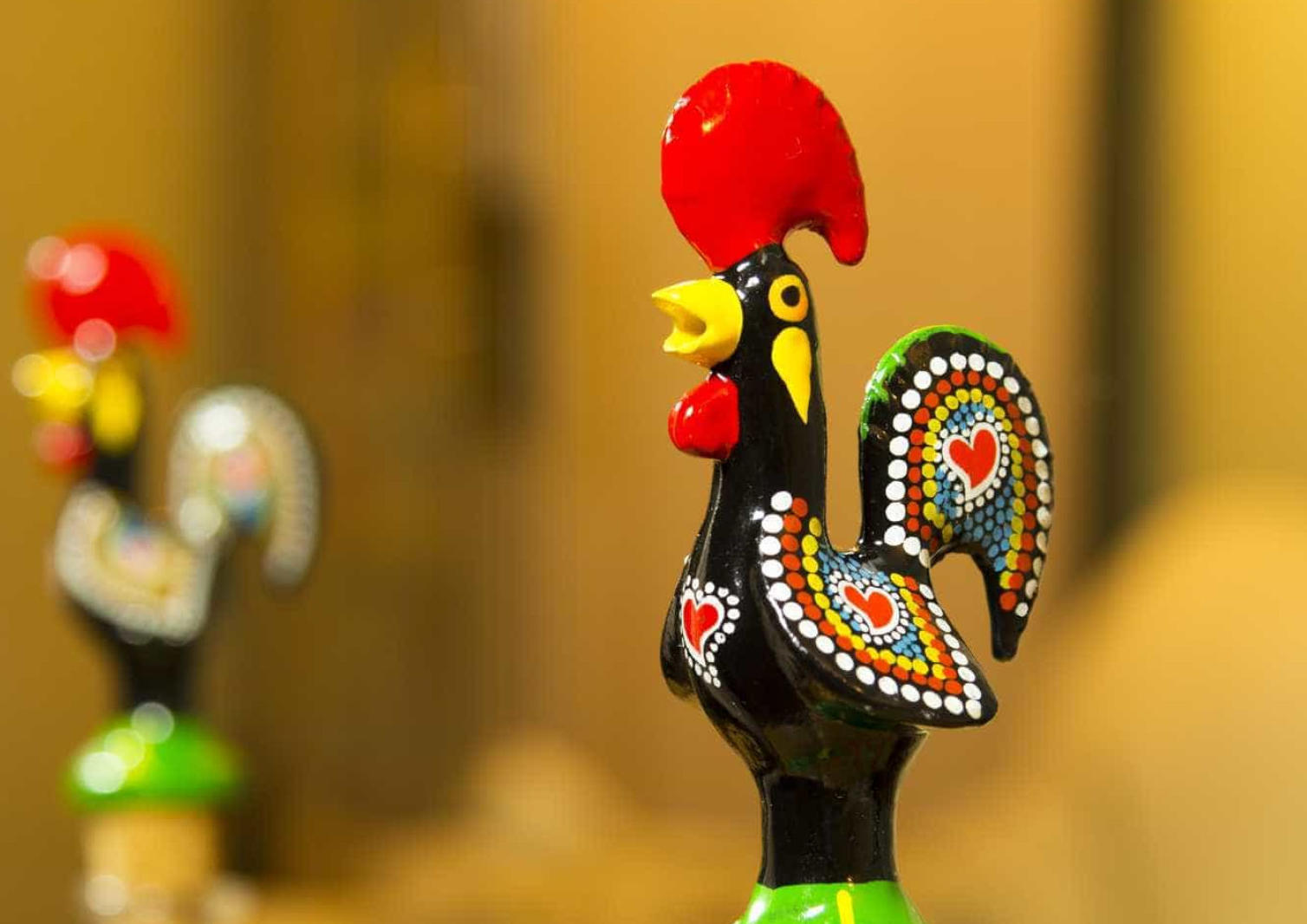Origins and Legend:
The origin of the Barcelos Rooster dates back to the 18th century in the town of Barcelos, located in the northwestern region of Portugal. According to popular legend, a pilgrim from Galicia, Spain, was passing through Barcelos on his way to Santiago de Compostela when he was wrongly accused of a crime and sentenced to death by hanging. As a last request, he pleaded with the judge to have one final meeting before his execution. The judge was enjoying a feast at that moment and dismissively said that he would grant the pilgrim's request if the rooster on the table crowed three times.As the pilgrim was being led to the gallows, he spotted a rooster and exclaimed, "It is as certain that I will be hanged as it is certain that this rooster will crow!" Miraculously, the rooster crowed, and the judge, realizing the pilgrim's innocence, rushed to the execution site and managed to save him from an unjust death.
Since that fateful day, the Barcelos Rooster has been regarded as a symbol of faith, justice, and good luck. It embodies the power of belief, the triumph of truth over falsehood, and the importance of hospitality and goodwill towards strangers.
Design and Symbolism:
The Barcelos Rooster is known for its vibrant colors and intricate patterns. It is often crafted from ceramic or hand-painted in bright shades of blue, yellow, red, and green. The rooster is depicted with its head raised high, wings spread wide, and tail feathers erect, symbolizing confidence, pride, and protection.Each color on the rooster carries its own symbolism. Blue represents honesty and integrity, yellow signifies wealth and prosperity, red symbolizes love and passion, and green represents hope and fertility. The intricate patterns adorning the rooster's body often feature flowers, hearts, and geometric motifs, adding to its aesthetic appeal.
Cultural Significance:
The Barcelos Rooster has become a beloved national symbol and a cherished souvenir for visitors to Portugal. It represents the country's rich cultural heritage, traditional craftsmanship, and folklore traditions.The rooster is not only a decorative item but also a popular lucky charm. Many Portuguese households display a Barcelos Rooster in their homes to bring good fortune, protect against evil spirits, and promote harmony and positivity. It is often placed near entrances or in kitchens, symbolizing a warm and welcoming atmosphere.
The Barcelos Rooster has transcended its local origins and gained international recognition. It is frequently featured on Portuguese handicrafts, including plates, tiles, keychains, and textiles, showcasing its enduring appeal and cultural significance.
Annual Festivities:
The city of Barcelos celebrates its famous rooster through a vibrant annual festival known as the Festa das Cruzes, held in May. During this event, the streets come alive with music, dance, colorful decorations, and parades. The highlight of the festival is the Rooster Fair, where artisans showcase their beautifully crafted Barcelos Roosters, attracting visitors from all over the world.In addition to the festival, the Barcelos Rooster is also associated with other Portuguese celebrations, such as weddings, anniversaries, and religious events, where it serves as a symbol of joy, good luck, and cultural heritage.
Preserving Tradition:
Efforts have been made to preserve and promote the tradition of the Barcelos Rooster. Local artisans continue to create exquisite rooster figurines using traditional techniques, passing down their skills from one generation to the next. The craftsmanship involved in making these roosters is recognized as an intangible cultural heritage by UNESCO, ensuring its safeguarding for future generations.In conclusion, the Barcelos Rooster stands as a symbol of Portuguese tradition, folklore, and cultural pride. Its captivating design, rich symbolism, and legendary tale have made it an enduring icon of faith, justice, and good fortune. Whether as a decorative item or a cherished souvenir, the Barcelos Rooster represents the beauty and heritage of Portugal, captivating the hearts of locals and visitors alike.



